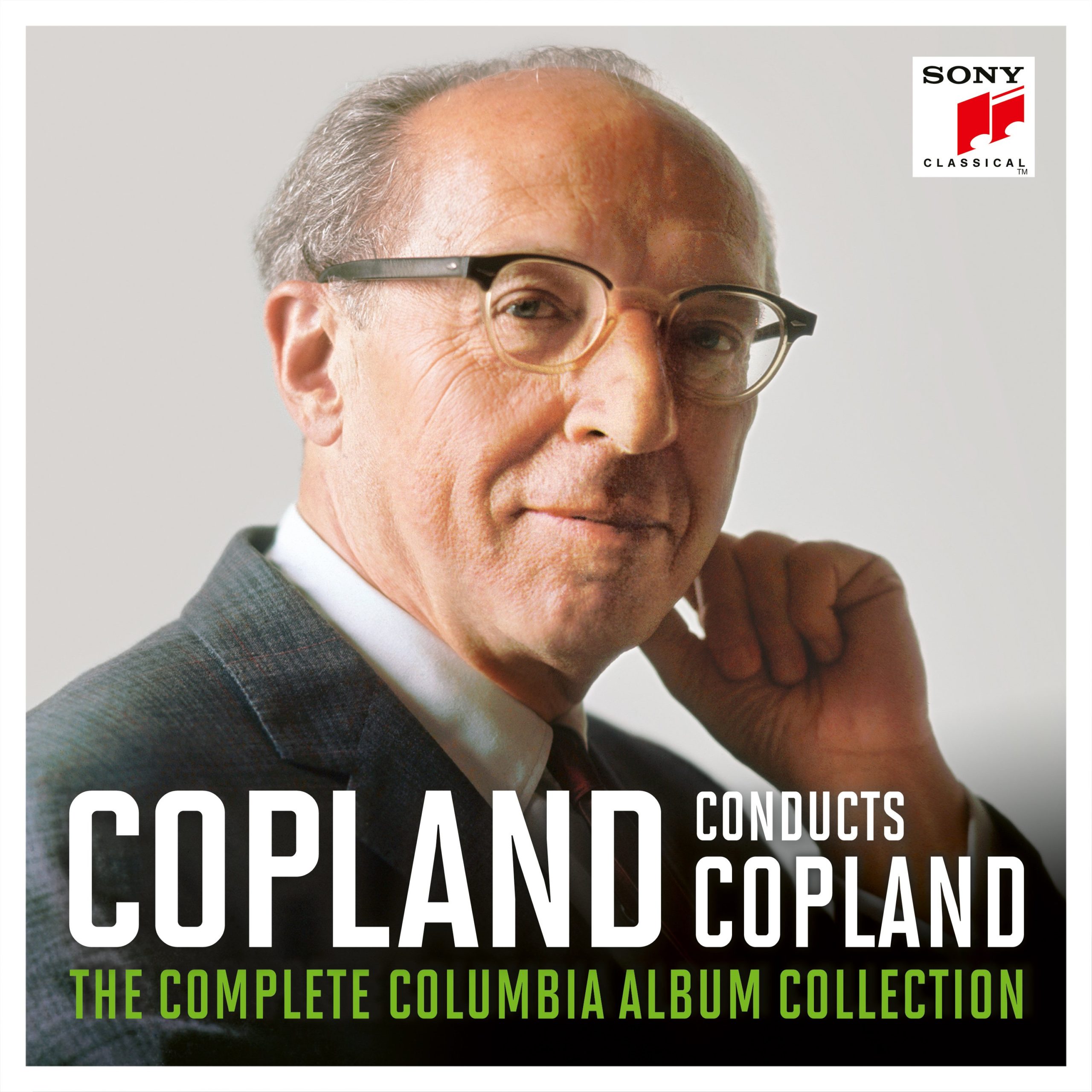
Although it might seem like it, I don’t usually listen to wall to wall Copland. Like the man himself I seek variety. It’s certainly true that I do have a large Copland collection to pick from with 59 Copland CDs and a couple of legacy vinyl and cassette albums from the early 90s. I have at least one version of every Copland composition that appears on CD and have several alternative versions of the larger works. With Spotify allowing me to keep an ear out for transcriptions and different versions I think I have most bases covered.
 However, once in a while there might be a new release that tempts me. Such is the case with Copland Conducts Copland: The Complete Columbia Album Collection. This 20 CD set covers Copland conducting (and sometimes playing) his own works from 1950-1976. Many of these recordings I already own so I was keen to know if there was anything I was missing that should be in my collection.
However, once in a while there might be a new release that tempts me. Such is the case with Copland Conducts Copland: The Complete Columbia Album Collection. This 20 CD set covers Copland conducting (and sometimes playing) his own works from 1950-1976. Many of these recordings I already own so I was keen to know if there was anything I was missing that should be in my collection.
Last week I went on a long trip to Northumbria, allowing me to take in a Prom at the Glasshouse in Gateshead. 917 miles of driving enabled a 15 hour marathon of listening exclusively to Copland – something I have never done before!
As always, such a deep immersion provoked lots of new thoughts and ideas. There were some rediscoveries of works I haven’t heard for a while and the odd encounters with works or recordings that I would rather not hear again. But overall, it was a blast and proved to me what I already knew – the tremendous breadth, sweep and vitality of his music. In fact, Copland wore so many different coats during his career that you could be kidded into thinking you were listening to five separate composers, not just one!
The Complete Columbia Album Collection is interesting as it includes nearly everything (but not all as the title would suggest) that Copland ever recorded. So that does mean the quality varies. What it does do though is show how Copland improved as a conductor. It also provides the intriguing opportunity to compare and contrast earlier and later recordings of several works such as 12 Poems of Emily Dickinson, the Piano Trio Vitebsk, the Piano Quartet, and the Clarinet Concerto. With Appalachian Spring, you get two versions of the suite and Copland’s woven version of the “original ballet” as well as footage of him rehearsing. The two versions of Old American Songs feature William Warfield as soloist with Copland on piano and the orchestrated version with Copland conducting.
What still works well
The vast majority of the most successful recordings presented in Copland conducts Copland: The Complete Columbia Album Collection are those from the 60s and early 70s when Copland worked with the London Symphony Orchestra and New Philhamonia. In many cases I still consider the LSO ones to be the “go to” versions especially for the more modernist works that have fewer rivals: Music for a Great City, Orchestral Variations, Symphonic Ode and the Short Symphony are right up there. Pretty good, seeing these were all recorded over 50 years ago.
I have written previously about some of my favourite Copland/LSO recordings – read about them and listen to the playlist here.
It’s true that in more recent times I do tend to favour John Wilson and the BBC Philharmonic as it’s hard to resist the better engineering (many long works are split into several tracks enhancing the listening experience) and vibrant colour afforded by the famed Chandos sound.
There is one work with no serious rival: Preamble for a Solemn Occasion. I have been thinking about this a lot lately as the organ transcription will feature in the forthcoming Copland 125 Anniversary Concert I am organising. The orchestral version available in this collection and in other Sony/Columbia Copland compilations is a belter. You have to do some digging to find alternatives. I came across the historic premiere recording (Bernstein and the NY Philharmonic with Laurence Olivier narrating) which is different (the LSO version has no narration) and a nice addition for completists like me, but the remastered 1949 sound isn’t great. If you are interested in seeing a narrated version, then I highly recommend Marin Alsop and the EUYO available on YouTube.
Although many Copland works conjure up vivid imagery, those images aren’t typically preserved in aspic. However, there are exceptions that seem frozen in time and place. For instance, Outdoor Overture, Jingo (from Statements) and Sunday Traffic (from The City score and part of Music for Movies) couldn’t be anywhere else but New Deal era US in the 1930s.
Whereas these works take you to the East Coast, The Red Pony points due west. The Copland and New Philharmonia collaboration is a fine account and one that I have never found a rival for. This was one of Copland’s last conducting gigs on record and the music for film and radio on that disc are outstanding throughout.
What pales into insignificance
The first track on CD 1 is the Clarinet Concerto recorded in 1950 with Benny Goodman as soloist. It’s really obvious that these were early days for Copland as a conductor and for Goodman getting his lips around his commission. It sounds tentative with Goodman seeming to chicken out of some of the high notes. I doubt that many subsequent versions of this concerto failed to surpass this early attempt.
Whereas, An Outdoor Overture, Jingo and Sunday Traffic are vibrant recordings but sound like 1938, there are several works that come across as nothing more than historic relics. The Martha Lipton version of 12 Poems of Emily Dickinson sounds all wrong to me. Lipton’s deliberate rendition, pinched accent and vibrato made me think of Celia Johnson in Brief Encounter. Its old-fashioned sound does have the feel of Emily Dickinson’s lock down life (with stiff collars and bodices), but I am used to more modern sounding voices.
The Adele Addison offering of the same is an improvement, but both this and In the Beginning (with Mildrid Miller as soprano soloist) and most of the choral offerings have been usurped by more recent entries onto the market. That said I do have a huge soft spot for William Warfield’s At the River (from Old American Songs Set 2) – probably my favourite version. A real downside of being determined to listen to everything meant that I was subjected to I bought me a cat twice which for me is two times too many!
I would question why anyone would desire to listen to some of the chamber works presented here more than once. Several are very early accounts (early 50s) so there is novelty in the fact that they were premiere recordings but that’s about it. Isaac Stern’s rendition of the Violin Sonata is a case in point – the recording sounds really quite shrill.
CD 19 includes Copland conducting his Third Symphony with the New Philharmonia Orchestra. It was his last outing on record from October 1976 and it’s not a good one to finish on. The second movement scherzo should provide a free and easy demob happiness, but it comes across as way too buttoned up. Other parts should be very taut but sound quite baggy. Copland and the orchestra could have been having an off day, but I do wonder if this was more to do with his diminishing powers of memory and concentration as dementia took hold? It is alarming in its lack of attention to detail compared to The Red Pony suite recorded with the same orchestra, four years earlier. It’s all over the place and one to avoid.
Where I am on the fence
There are a few pieces where the jury is still out for me. For instance, I can’t make up my mind if Henry Fonda is the right narrator for Lincoln Portrait? It should work but I feel he takes too much of a lead from the line “Abe Lincoln was a quiet and a melancholy man”. I’m not sure if it shouldn’t have a bit more oomph? I’ll be seeing it played in Glasgow (18 November 2025) and Birmingham (4 July 2026) so hopefully that will help me make my mind up.
For over two decades I have rarely played the suite version of Appalachian Spring. I struggled to reconcile myself with Simple Gifts part and the absence of the Fear/Wrath/Crisis sections present in the original ballet. However, having listened to them both in quick succession, I’m now a bit confused finding certain aspects of the suite more appealing. I have always adored the Allegro but in this instance the suite version is the one with greater colour and emotion – it brought the lump in the throat, but the ballet version didn’t. I might have to listen to a few other recordings side by side to confirm this reaction.
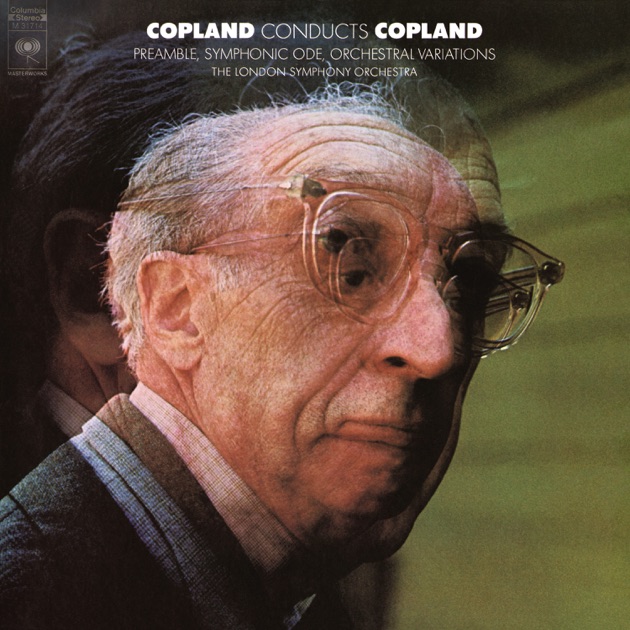 Talking of comparisons – there are some bits of Copland that lend themselves to easy assessment by even a novice listener and once you hear them you can’t fail to listen out for the excerpts with a keen and expectant ear. One outstanding example is the principal violin solo at the start of Billy’s Death from Billy the Kid. Listen to the Bernstein/NY Philharmonic version (not in this collection) and you will be amazed – it really does sound like the violin is sobbing tears. Listen to the Copland/LSO and it is much less overtly emotional. Then try listening to Leonard Slatkin and the Detroit Symphony Orchestra (Full ballet version on Naxos) and you can’t hear this effect at all. I’m still making my mind up on this and who’s interpretation is most to my liking. Sheesh – just when you think that you’ve done the ballets to death, they start posing more questions! Also, it just goes to show that there is hidden depth in Copland’s simplicity and how different conductors really do bring something of themselves to a recording.
Talking of comparisons – there are some bits of Copland that lend themselves to easy assessment by even a novice listener and once you hear them you can’t fail to listen out for the excerpts with a keen and expectant ear. One outstanding example is the principal violin solo at the start of Billy’s Death from Billy the Kid. Listen to the Bernstein/NY Philharmonic version (not in this collection) and you will be amazed – it really does sound like the violin is sobbing tears. Listen to the Copland/LSO and it is much less overtly emotional. Then try listening to Leonard Slatkin and the Detroit Symphony Orchestra (Full ballet version on Naxos) and you can’t hear this effect at all. I’m still making my mind up on this and who’s interpretation is most to my liking. Sheesh – just when you think that you’ve done the ballets to death, they start posing more questions! Also, it just goes to show that there is hidden depth in Copland’s simplicity and how different conductors really do bring something of themselves to a recording.
The use of antique covers for each disc is interesting but some of the pictures are not really to my taste. That said the one featuring Symphonic Ode and Orchestral Variations is a weird classic. I think someone must have heard the music and decided that this is what the modernist noise must have been doing to Copland’s head whilst he was writing the work! I wish I had this album on vinyl. It does remind me of something my wife Sheena said to me a while ago. I was listening to John Coltrane’s A Love Supreme quite loudly in the kitchen. She said:
This is music that says, “I have a migraine and you’re going to have one too!
Omissions and additions
One obvious omission is the 1959 version of Statements by Copland and LSO. This is underwhelming and originally featured on an album with the Billy the Kid suite. I am sure that Copland was only too happy to have another go in 1964. Including this would have been another opportunity to show how Copland honed his craft as a conductor and how the understanding with the LSO improved over the years.
Leaving this out isn’t a major loss as you can find it easily enough on Spotify. However, what is really confusing is why there are three recordings that include Leornard Bernstein as conductor, not Copland: Music for the Theatre, Inscape and Connotations? Yes, they would be big omissions but including these does not fit the Copland conducts Copland theme.
It is indeed odd that Copland never recorded Music for the Theatre? Similarly, his Organ Symphony and the orchestral version of 8 Poems of Emily Dickinson are the other major works that escaped his conducting baton.
Other interesting thoughts
Copland rehearsing Appalachian Spring with the Columbia Chamber Orchestra gives a really nice fly on the wall introduction to his conducting style. He is very keen to make sure that the orchestra sounds “American” and direct and doesn’t slip into sentimentality. Any time he senses this from the ensemble he warns them against sounding too much like Massenet or Tchaikovsky.
It also had me reaching for my musical vocabulary book. The three phrases that Copland uses throughout the various spliced takes are Diminuendo, Sforzato and Marcato. The definitions are:
- Diminuendo: a gradual decrease in loudness. It’s the opposite of a crescendo, which means to gradually increase the volume.
- Sforzato: a specific note or chord should be played with sudden, strong emphasis or a marked accent, creating a sudden increase in volume.
- Marcato: a note or passage that should be played with emphasis and a degree of force, often with a short, accented sound.
To me sforzato and marcato are exactly the same thing.
One other thing that I found intriguing was the fact that Copland recorded Dance Panels in December 1969 at Abbey Road studios. This was only a couple of months after John, Paul, George and Ringo departed having completed the album Abbey Road, their last sessions as the Beatles. It reminded me of my sliding doors blog on Copland and Muhammed Ali.
Par for the course?
So where does all this leave the would-be buyer of Copland Conducts Copland: The Complete Columbia Album Collection? The material covered is largely conventional. Copland never recorded any of the original ballets or released any of his film music during his lifetime[1]. Similarly, he never recorded any transcriptions. All of the material presented has been released before or is available on Spotify so there is nothing new to attract the collector. That said the collection is well packaged and a bargain at around £66 if you can get your hands on a copy – based on my efforts, not easy.
I would say that around 40% of the versions are as good as or marginally inferior to others available so that does leave quite a big body of work for which you will need to look elsewhere. Also, please bear in mind that this is not an exhaustive representation of Copland’s music. It includes only one solo piano piece, skirts over most of the film music and 50% of his chamber works, has no art songs, The Second Hurricane or Emblems for band and omits lots of the dramatic bits from The Tender Land. All that lot would add on a good few more hours listening and a few more hours driving.
What about this collection in terms of a journey through Copland’s conducting career? If you take away the Bernstein there are eighteen and a half CDs worth of music here. Based on this number, please forgive me for this analogy to a round of golf!
Copland starts with a scrambled up and down bogey. He struggles for most of the front nine with several duffs, a few visits to the sand and one lost ball. Around the turn he steadies the ship with some solid two putt pars. Into the back nine, the putter gets red hot with four birdies in five holes. Standing on the 18th, Copland needs a par for a 79 but he slices his tee shot into a Gorse bush, hacks out, thins one onto the front of the green and then three putts resulting in a disappointing triple bogey to finish!
For sure, my long round trip did involve a mixed bag listening experience. However, (to stretch the golfing analogy one step further) it was in no way a “good drive spoiled” [2] and had some truly memorable highlights along the way!
[1] To hear Copland conducting one of his own soundtracks you’ll have to check out the Something Wild score – a brilliant release from 2014 on the Varèse Sarabande label. I have mentioned this before but this release has a much better version of Subway Jam than what appears in Music for a Great City. Especially the snare drum roll used to portray the sound of a train travelling at high velocity through the metro station. It is inexplicable to me and a major disappointment that Copland cut this bit from the later suite. I would love to know why?
[2] The original quote that “golf is a good walk spoiled” is attributed to Mark Twain.

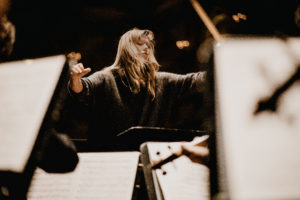
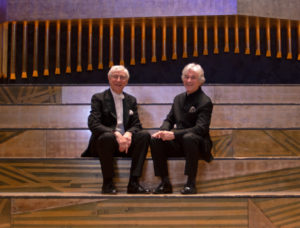
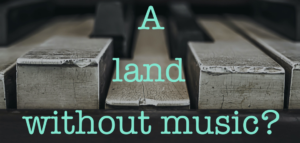
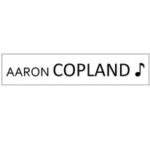




Leave a Comment